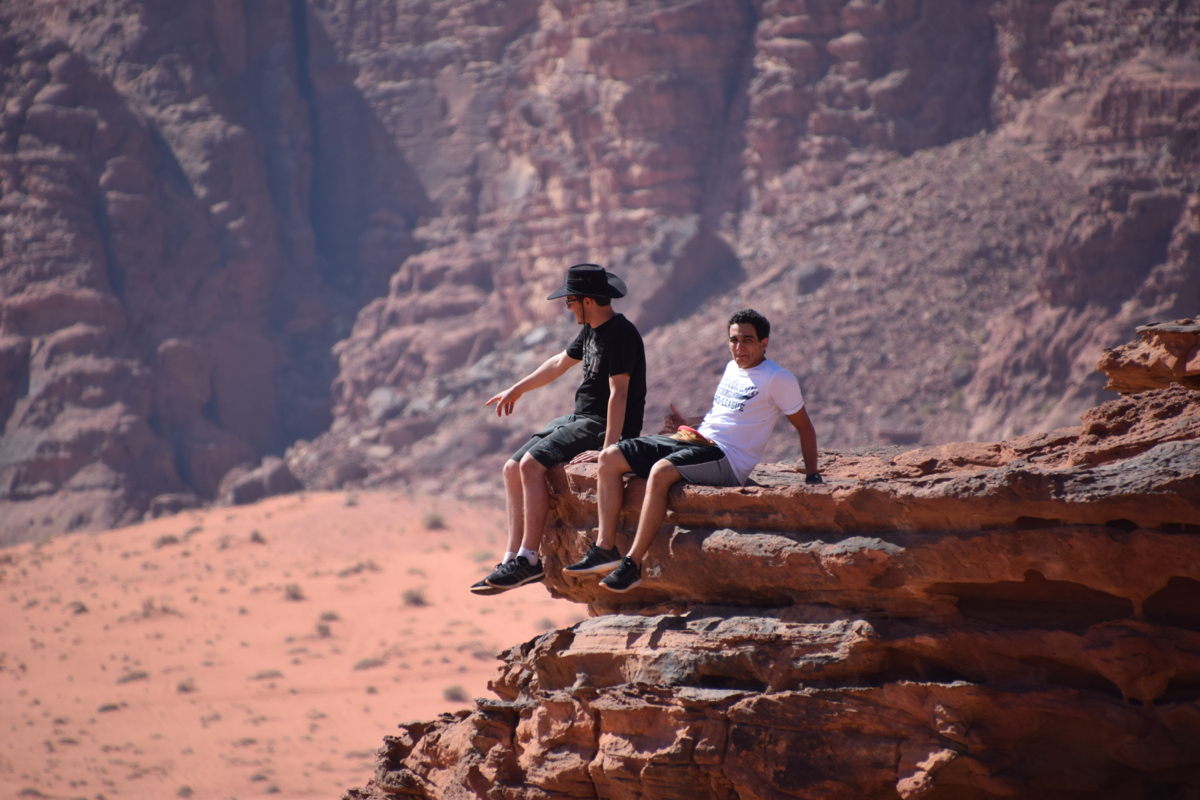There are few places on Earth that can make you feel as though you’ve stepped onto another planet, but Wadi Rum in southern Jordan is one of them. Known as the “Valley of the Moon,” this vast desert landscape of wind-carved sandstone, towering cliffs, and endless red sands is otherworldly in every sense. Whether you’re chasing cinematic sunsets, tracing the footsteps of Lawrence of Arabia, or simply seeking silence under a sky drenched in stars, Wadi Rum promises a kind of magic that lingers long after the journey ends.

The Allure of the Desert
Stretching across nearly 720 square kilometers, Wadi Rum is a UNESCO World Heritage site and a natural masterpiece sculpted over millions of years. The desert’s rich ochre tones shift with the light—from golden yellows at dawn to deep crimson as the sun dips behind the mountains. The air is crisp and dry, carrying only the whispers of the wind and the occasional bleat of a Bedouin goat in the distance.
It’s a place that slows time. Days melt into a rhythm of exploration and reflection, and nights unfold like a celestial theater, the Milky Way blazing overhead in stunning clarity.

Staying at Rum Magic Nights Camp
For those who want to truly immerse themselves in Wadi Rum’s quiet majesty, Rum Magic Nights Camp offers an unforgettable stay. Nestled amid the dunes and surrounded by towering sandstone cliffs, the camp blends comfort with authenticity.
Guests can choose between traditional Bedouin-style tents or modern “Martian domes,” where panoramic glass walls allow you to fall asleep beneath a canopy of stars. The evenings are especially enchanting—Bedouin hosts serve fragrant zarb, a traditional meal of lamb and vegetables slow-cooked in an underground oven, followed by sweet mint tea enjoyed around a crackling fire. Local musicians sometimes play the oud, filling the desert night with soft melodies that feel timeless.
The camp manages to strike that perfect balance between rustic and refined—showers are hot, beds are comfortable, and the staff’s hospitality makes you feel like family.
When to Visit
The best time to visit Wadi Rum is between March and May or from September to November, when temperatures are pleasant and the desert’s colors are at their most vivid. Spring brings mild days and cool nights, while autumn is ideal for hiking and stargazing.
Summer (June to August) can be intensely hot, with temperatures soaring past 40°C (104°F), though early morning and evening excursions remain enjoyable. Winter (December to February) offers fewer crowds and crystal-clear skies, but nights can be very cold—bring a warm jacket if you’re camping.
Things to Do in Wadi Rum
There’s no shortage of ways to explore this spectacular desert. Some of the most rewarding experiences include:
-
Jeep Tours: The classic way to cover ground, these guided drives take you to key landmarks.
-
Camel Rides: For a slower, more traditional experience, ride a camel across the dunes at sunset. The stillness and rhythmic sway are unforgettable.
-
Hiking and Rock Climbing: Wadi Rum is a paradise for adventurers. Trails range from gentle walks through sandy valleys to challenging climbs up Jebel Umm Ad Dami, Jordan’s highest peak.
-
Stargazing: With virtually no light pollution, the night sky here is breathtaking. Many camps, including Rum Magic Nights, offer guided stargazing sessions.
-
Hot Air Balloon Rides: Drift above the desert at dawn for an unmatched perspective of Wadi Rum’s sweeping beauty.
A Desert That Stays With You
Wadi Rum is not just a destination—it’s an experience of scale and silence, of timelessness and connection. As the campfire dies down and the desert grows still, you begin to understand what draws travelers back again and again.
The next morning, as the first rays of sunlight spill over the sandstone cliffs and the desert glows with soft amber light, you’ll feel the same quiet awe that has enchanted explorers for centuries.
Wadi Rum is a reminder that sometimes, the greatest journeys are the ones that lead us into the middle of nowhere—only to find ourselves completely at peace.
